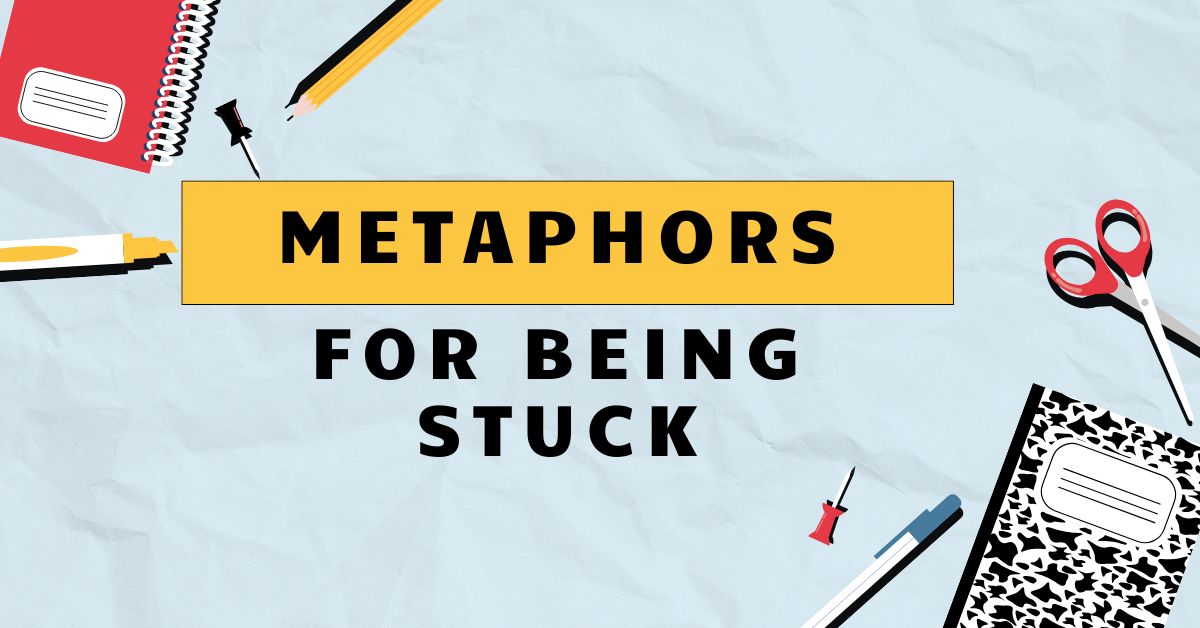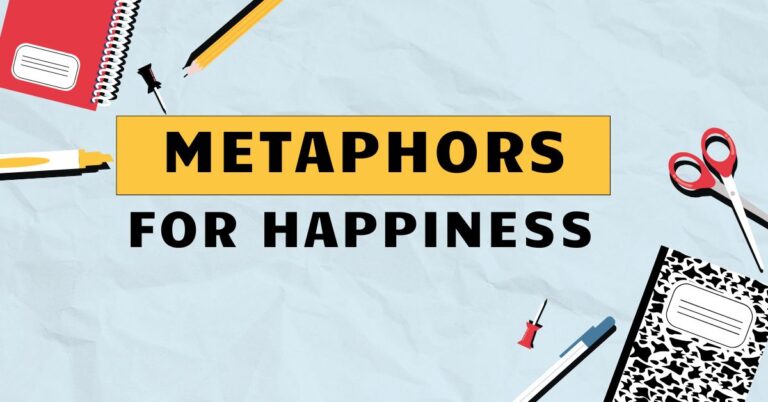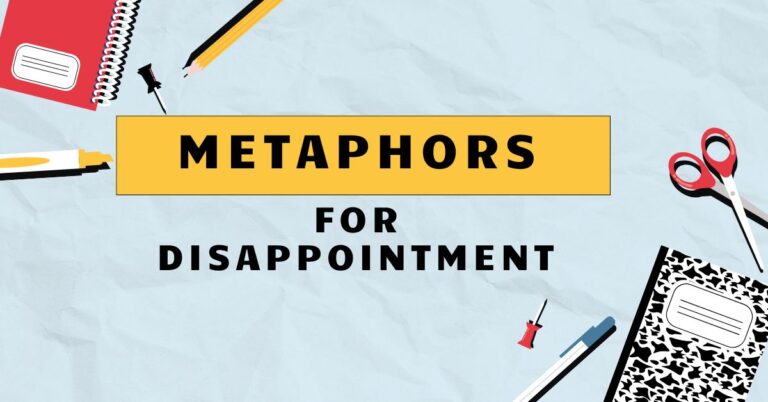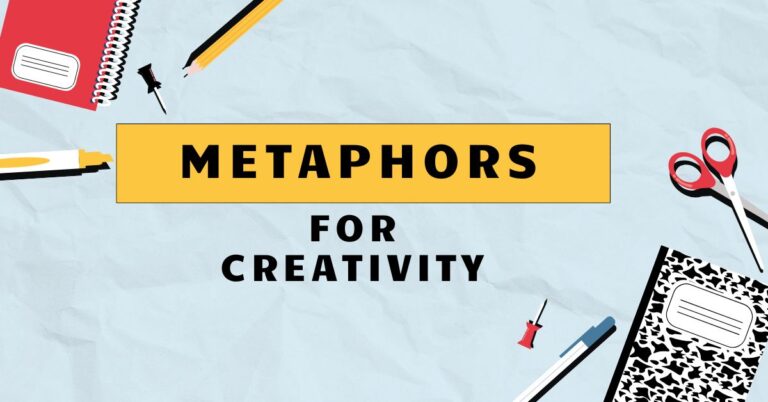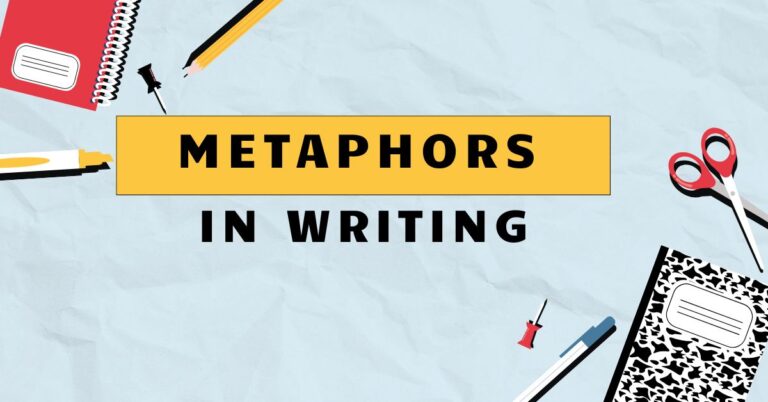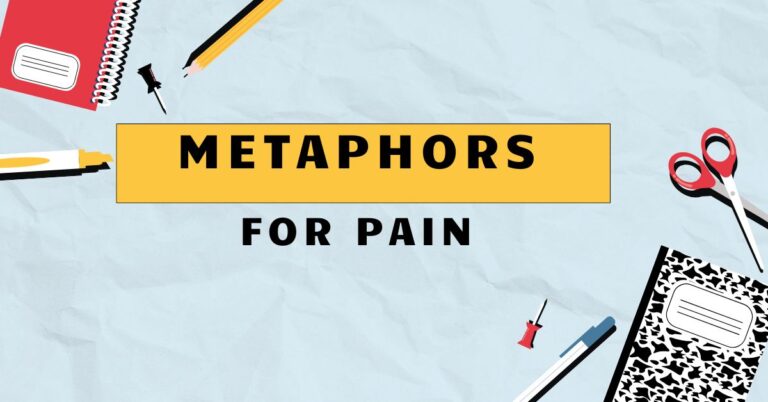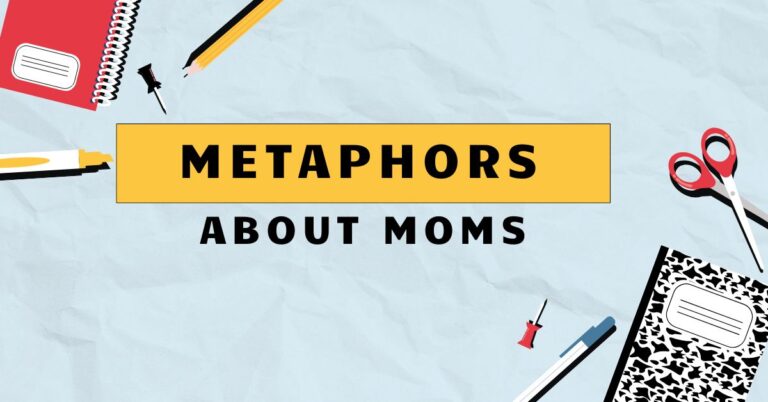43 Metaphors for Being Stuck: Understanding Figurative Language
Metaphors are powerful tools in the English language, allowing us to express complex ideas and emotions in a vivid and relatable way. When we feel trapped, stagnant, or unable to progress, metaphors can help articulate these feelings more effectively than literal language.
Understanding and using metaphors for “being stuck” enriches our communication, adds depth to our writing, and provides a richer understanding of the human experience. This article explores the various metaphors used to describe the feeling of being stuck, their meanings, and how to use them effectively.
This guide will benefit students, writers, and anyone interested in enhancing their understanding and use of figurative language.
This article delves into the common metaphors used to convey the feeling of being stuck, analyzing their structural components, diverse categories, and contextual applications. Through detailed explanations, numerous examples, and practical exercises, readers will gain a comprehensive understanding of how to use these metaphors effectively.
By mastering these techniques, you’ll be able to express yourself with greater nuance and impact, whether in writing or everyday conversation.
Table of Contents
- Definition of Metaphor and “Being Stuck”
- Structural Breakdown of Metaphors
- Types of Metaphors for Being Stuck
- Examples of Metaphors for Being Stuck
- Usage Rules for Metaphors
- Common Mistakes When Using Metaphors
- Practice Exercises
- Advanced Topics in Metaphor Usage
- Frequently Asked Questions
- Conclusion
Definition of Metaphor and “Being Stuck”
Ametaphoris a figure of speech that directly compares two unrelated things, asserting that oneisthe other. It’s not a literal comparison but a figurative one, used to create vivid imagery and deeper meaning.
Unlike similes, which use “like” or “as” to make a comparison, metaphors directly equate the two subjects. Metaphors enhance communication by allowing us to understand abstract concepts through more concrete or relatable terms.
A metaphor works by transferring qualities from one thing to another, providing new insights and perspectives.
The concept of “being stuck” refers to a state of stagnation, inability to progress, or feeling trapped in a situation, mindset, or circumstance. It can manifest in various aspects of life, including career, relationships, personal growth, and creative endeavors.
When someone feels stuck, they experience a sense of frustration, helplessness, and a lack of forward momentum. Metaphors for “being stuck” help to articulate these feelings by drawing parallels to tangible experiences, making the abstract concept more understandable and relatable.
Structural Breakdown of Metaphors
Metaphors consist of two primary elements: thetenorand thevehicle. Thetenoris the subject being described, while thevehicleis the object or concept used to represent the tenor.
The effectiveness of a metaphor depends on the relationship between the tenor and the vehicle and how well the vehicle illuminates the tenor’s qualities. Understanding this structure helps in both interpreting and creating compelling metaphors.
The structure of a metaphor also involves theground, which is the shared characteristic or similarity between the tenor and the vehicle. It provides the basis for the comparison and makes the metaphor meaningful.
For example, in the metaphor “Life is a journey,” life (tenor) is compared to a journey (vehicle), and the ground is the shared characteristic of progression, challenges, and experiences.
Types of Metaphors for Being Stuck
Metaphors for “being stuck” can be categorized based on the area of life or the type of obstacle they represent. Here are some common categories:
Physical Entrapment Metaphors
These metaphors draw on the imagery of being physically confined or unable to move freely. They often evoke a sense of claustrophobia and helplessness.
These metaphors can powerfully convey the feeling of being trapped in a situation or circumstance.
Mental Block Metaphors
These metaphors relate to cognitive obstacles that prevent clear thinking or problem-solving. They often involve imagery of barriers, obstructions, or mental fog.
These metaphors highlight the internal struggles that contribute to feeling stuck.
Emotional Stagnation Metaphors
These metaphors describe a state of emotional numbness or lack of growth. They often involve imagery of decay, stagnation, or emotional paralysis.
These metaphors emphasize the emotional toll of feeling stuck.
Career Dead-End Metaphors
These metaphors portray a career path that offers no further advancement or opportunity. They often involve imagery of cul-de-sacs, brick walls, or unfulfilling work.
These metaphors reflect the frustration of feeling trapped in a career without prospects.
Relationship Stagnation Metaphors
These metaphors describe relationships that have become stagnant or unfulfilling. They often involve imagery of being stuck in a rut, walking on eggshells, or emotional distance.
These metaphors capture the sense of disconnection and lack of growth in a relationship.
Examples of Metaphors for Being Stuck
The following tables provide a wide range of examples of metaphors for “being stuck,” categorized by the types discussed above. Each example is designed to illustrate how different metaphors can be used to convey the same underlying feeling in various ways.
Pay attention to how each metaphor uses imagery and comparison to create a vivid sense of being stuck.
The table below showcases metaphors related to physical entrapment. These metaphors use imagery related to confinement, restriction, and inability to move freely, effectively conveying the feeling of being trapped in a specific situation.
| Metaphor | Explanation |
|---|---|
| “I’m in a rut.” | Suggests a repetitive, unchanging routine that is difficult to escape. |
| “I’m chained to my desk.” | Implies a lack of freedom and being bound to one’s work. |
| “I’m trapped in this job.” | Directly conveys the feeling of being confined with no escape. |
| “I’m in a box.” | Suggests limitations and a lack of space to grow or move. |
| “I’m behind bars.” | Evokes a sense of imprisonment and lack of control. |
| “I’m stuck in quicksand.” | Implies that the more one struggles, the deeper one sinks. |
| “I’m wading through mud.” | Suggests slow and difficult progress. |
| “I’m in a maze.” | Conveys confusion and a lack of direction. |
| “I’m in a spiderweb.” | Implies being ensnared and unable to break free. |
| “I’m in a vortex.” | Suggests being pulled into a situation with no escape. |
| “I’m tied down.” | Implies restrictions and lack of mobility. |
| “I’m in a straightjacket.” | Suggests a forced restriction of movement and expression. |
| “I’m buried alive.” | Evokes a sense of suffocation and hopelessness. |
| “I’m in a dead end.” | Conveys a lack of future prospects or options. |
| “I’m in a corner.” | Implies being trapped with no way out. |
| “I’m in a cage.” | Suggests confinement and restriction of freedom. |
| “I’m glued to this spot.” | Implies an inability to move or progress. |
| “I’m anchored to the past.” | Conveys being held back by past experiences. |
| “I’m in a swamp.” | Suggests being bogged down in a difficult situation. |
| “I’m in a holding pattern.” | Implies waiting without progress. |
| “I’m trapped in amber.” | Suggests being perfectly preserved but unable to change or move. |
| “I’m in a cocoon.” | Implies a stage of transformation, but currently restricted. |
| “I’m in a revolving door.” | Conveys repetitive movement without actual progress. |
The table below presents metaphors related to mental blocks. These metaphors utilize imagery of barriers, fog, and cognitive obstructions to describe the feeling of being unable to think clearly or make progress mentally.
| Metaphor | Explanation |
|---|---|
| “My mind is a blank.” | Suggests an inability to think or recall information. |
| “I’ve hit a wall.” | Implies an obstacle that prevents further progress. |
| “I’m in a mental fog.” | Conveys confusion and lack of clarity. |
| “My brain is frozen.” | Suggests an inability to think or process information. |
| “I’m in a thought loop.” | Implies repetitive, unproductive thinking. |
| “I’m drawing a blank.” | Suggests an inability to recall information. |
| “My creativity is blocked.” | Conveys an inability to generate new ideas. |
| “I’m lost in thought.” | Implies confusion and a lack of direction. |
| “I’m stuck in my head.” | Suggests overthinking and an inability to act. |
| “My mind is a battlefield.” | Implies internal conflict and confusion. |
| “I’m facing a mental roadblock.” | Conveys an obstacle to clear thinking. |
| “My thoughts are tangled.” | Suggests confusion and disorganization. |
| “I’m in a mental maze.” | Implies confusion and a lack of direction in thinking. |
| “I’m mentally paralyzed.” | Suggests an inability to act due to overthinking. |
| “My ideas are in a deadlock.” | Implies that ideas are conflicting and preventing progress. |
| “My brain is in a rut.” | Suggests repetitive, unproductive thinking patterns. |
| “I’m hitting a mental ceiling.” | Conveys reaching the limit of one’s cognitive abilities. |
| “I’m lost in the weeds.” | Implies being overwhelmed by details and losing sight of the big picture. |
| “My thoughts are in a jumble.” | Suggests confusion and a lack of order in thinking. |
| “I’m cognitively constipated.” | Implies difficulty in generating or processing ideas. |
The following table provides metaphors related to emotional stagnation. These metaphors use imagery of decay, numbness, and lack of emotional movement to describe the feeling of being emotionally stuck.
| Metaphor | Explanation |
|---|---|
| “My emotions are frozen.” | Suggests an inability to feel or express emotions. |
| “I’m emotionally numb.” | Implies a lack of feeling or emotional response. |
| “My heart is in a cage.” | Conveys emotional confinement and restriction. |
| “I’m carrying a heavy heart.” | Suggests emotional burden and sadness. |
| “My spirit is crushed.” | Implies a loss of hope and enthusiasm. |
| “I’m drowning in sorrow.” | Suggests being overwhelmed by sadness. |
| “My feelings are stagnant.” | Conveys a lack of emotional growth or change. |
| “I’m emotionally paralyzed.” | Suggests an inability to act due to emotional distress. |
| “My soul is trapped.” | Implies a deep sense of confinement and unhappiness. |
| “I’m in an emotional desert.” | Conveys a lack of emotional nourishment or fulfillment. |
| “My joy is buried.” | Suggests that happiness is suppressed or hidden. |
| “I’m stuck in grief.” | Implies an inability to move past a loss. |
| “My emotions are in a rut.” | Suggests repetitive, unproductive emotional patterns. |
| “I’m emotionally constipated.” | Implies difficulty in expressing or processing emotions. |
| “My heart is a stone.” | Suggests a lack of empathy and emotional warmth. |
The table presented below covers metaphors related to career dead-ends. These metaphors use imagery of blocked paths, unfulfilling work, and lack of prospects to describe the feeling of being stuck in a career.
| Metaphor | Explanation |
|---|---|
| “My career is a dead end.” | Directly conveys a lack of future prospects. |
| “I’m on a hamster wheel.” | Suggests repetitive, unfulfilling work without progress. |
| “I’m climbing a ladder to nowhere.” | Implies working hard without achieving meaningful goals. |
| “My job is a grind.” | Conveys a monotonous and exhausting work routine. |
| “I’m stuck in a rut at work.” | Suggests a repetitive, unchanging work routine. |
| “My career is in a holding pattern.” | Implies waiting without progress or advancement. |
| “I’ve hit a glass ceiling.” | Conveys an invisible barrier to career advancement. |
| “My job is a cage.” | Suggests confinement and a lack of freedom in one’s career. |
| “I’m in a career swamp.” | Implies being bogged down in a difficult and unfulfilling job. |
| “My work is a treadmill.” | Suggests constant effort without forward movement. |
| “I’m on a sinking ship.” | Conveys a feeling of impending failure in one’s career. |
| “My career is a brick wall.” | Implies an insurmountable obstacle to advancement. |
| “I’m in a career cul-de-sac.” | Conveys a lack of future prospects or options in one’s career. |
The table below showcases metaphors related to relationship stagnation. These metaphors use imagery of being stuck in a rut, walking on eggshells, and emotional distance to describe the feeling of being stuck in a relationship.
| Metaphor | Explanation |
|---|---|
| “Our relationship is in a rut.” | Suggests a repetitive, unchanging relationship pattern. |
| “We’re walking on eggshells.” | Implies a fragile relationship where one must be careful. |
| “We’re drifting apart.” | Conveys a growing emotional distance. |
| “Our love is a battlefield.” | Suggests constant conflict and struggle. |
| “We’re stuck in a toxic cycle.” | Implies a repetitive, harmful relationship pattern. |
| “Our relationship is a prison.” | Conveys a feeling of confinement and unhappiness. |
| “We’re in a relationship desert.” | Suggests a lack of emotional nourishment or fulfillment. |
| “Our communication is a minefield.” | Implies that conversation is fraught with danger. |
| “We’re living separate lives.” | Conveys a lack of connection and shared experiences. |
| “Our relationship is a burden.” | Suggests that the relationship is a source of stress. |
| “We’re stuck in the past.” | Implies an inability to move forward due to past issues. |
| “Our love is a stagnant pool.” | Conveys a lack of growth and vitality in the relationship. |
| “We’re in a relationship quicksand.” | Implies that the more we try to fix things, the worse they get. |
Usage Rules for Metaphors
Using metaphors effectively involves several key considerations. First, ensure that the metaphor isappropriatefor the context and audience.
A metaphor that is too obscure or complex may confuse the reader rather than enlighten them. Second, maintainconsistencywithin your metaphors.
Avoid mixing metaphors in a way that creates a nonsensical or contradictory image. Third, use metaphorssparingly.
Overuse can diminish their impact and make your writing feel contrived.
Another important rule is to ensure that thegroundof the metaphor is clear. The shared characteristic between the tenor and the vehicle should be readily apparent to the reader.
If the connection is too tenuous, the metaphor will fail to resonate. Additionally, be mindful of theconnotationsof the vehicle.
The associations and emotions evoked by the vehicle should align with the intended meaning of the metaphor.
Common Mistakes When Using Metaphors
One common mistake is usingclichéd metaphors, which are overused and have lost their impact. Instead of saying “Life is a highway,” try to come up with a more original and evocative comparison.
Another mistake ismixing metaphorsinappropriately, creating a confusing or nonsensical image. For example, “He was skating on thin ice while building bridges” combines two unrelated metaphors in a way that doesn’t make sense.
Another frequent error is using metaphors that aretoo literalor obvious. A good metaphor should offer a fresh perspective or insight, not merely restate the obvious.
Finally, be careful not tooverextenda metaphor, pushing the comparison too far and drawing strained or illogical parallels. The following table highlights some common mistakes, along with the incorrect and corrected examples.
| Mistake | Incorrect Example | Corrected Example |
|---|---|---|
| Clichéd Metaphor | “Life is a highway.” | “Life is a tightrope walk.” |
| Mixed Metaphor | “He was skating on thin ice while building bridges.” | “He was skating on thin ice.” or “He was building bridges.” |
| Too Literal | “Being stuck is like being unable to move.” | “Being stuck is like being buried in concrete.” |
| Overextended Metaphor | “My career is a garden; I planted seeds, watered them, and now they’re demanding a corner office.” | “My career is a garden; I planted seeds and watered them.” |
| Unclear Ground | “My mind is a television.” | “My mind is a television, constantly switching channels.” |
Practice Exercises
Test your understanding of metaphors for “being stuck” with these exercises. Identify the metaphors in each sentence and explain their meaning.
Then, create your own metaphors to describe the feeling of being stuck in various situations.
Exercise 1: Identifying Metaphors
- The project was a swamp, and we were all sinking in it.
- Her career had become a cage, trapping her ambitions.
- His mind was a blank canvas when he tried to solve the problem.
- Their relationship was a stagnant pool, devoid of life.
- He felt like he was running in circles, never getting anywhere.
- The bureaucracy was a maze, and he was lost in it.
- She was chained to her past, unable to move forward.
- His creativity was a dried-up well.
- The negotiation turned into a deadlock.
- He was stuck in a thought loop, replaying the same events.
Answer Key:
- Swamp: A difficult, overwhelming situation.
- Cage: A confining and restrictive environment.
- Blank canvas: Empty and lacking ideas.
- Stagnant pool: Lacking growth and vitality.
- Running in circles: Making no progress.
- Maze: Confusing and difficult to navigate.
- Chained: Restricted and unable to break free.
- Dried-up well: Depleted and unproductive.
- Deadlock: An impasse with no resolution.
- Thought loop: Repetitive and unproductive thinking.
Exercise 2: Creating Metaphors
Create a metaphor for each of the following scenarios:
- Feeling stuck in a job you dislike.
- Being unable to overcome a personal challenge.
- Experiencing writer’s block.
- Being stuck in traffic.
- Feeling stuck in a loveless marriage.
- Feeling stuck after an accident.
- Feeling stuck in the same old routine.
- Being unable to complete a project.
- Feeling stuck during a global pandemic.
- Being unable to express yourself.
Sample Answers:
- My job is a ball and chain, weighing me down every day.
- The challenge is a mountain I can’t seem to climb.
- My mind is a locked room, and I can’t find the key.
- Being stuck in traffic is like being in a metal zoo.
- A loveless marriage is a slow, silent death.
- After the accident, my life felt like a shattered mirror.
- The same old routine is a broken record, playing the same song over and over.
- The project feels like an albatross around my neck.
- The pandemic is a global pause button, halting progress.
- Being unable to express yourself is like having your tongue tied.
Advanced Topics in Metaphor Usage
For advanced learners, exploring the subtleties ofextended metaphorscan add depth to their writing. An extended metaphor is a metaphor that is sustained over several lines or paragraphs, developing the comparison in greater detail.
This technique can create a powerful and immersive reading experience. Also, explore the use ofmixed metaphorsintentionally for comedic or surreal effect, though this requires a strong understanding of metaphor principles.
Another advanced topic is the study ofconceptual metaphors, which are underlying cognitive structures that shape our understanding of abstract concepts. For example, the conceptual metaphor “ARGUMENT IS WAR” influences how we talk about arguments, using terms like “attack,” “defend,” and “win.” Understanding these conceptual metaphors can provide deeper insights into how language shapes our thinking.
Exploring metaphors in different cultural contexts can also reveal fascinating variations in how people perceive and express the feeling of being stuck.
Frequently Asked Questions
- What is the difference between a metaphor and a simile?
- How can I avoid using clichéd metaphors?
- What should I do if I accidentally mix metaphors?
- How can I improve my ability to create effective metaphors?
- Are there any situations where metaphors should be avoided?
- How do cultural differences affect the interpretation of metaphors?
- What is the role of context in understanding metaphors?
- How can I use metaphors to make my writing more engaging?
- How can I identify the tenor and vehicle in a metaphor?
- What are some common conceptual metaphors related to time?
A metaphor directly compares two unlike things by stating that oneisthe other, while a simile uses “like” or “as” to make a comparison. For example, “Life is a journey” is a metaphor, while “Life is like a journey” is a simile.
Similes are generally more explicit and less forceful than metaphors.
To avoid clichés, focus on creating original and specific comparisons. Think about the unique qualities of the tenor and try to find a vehicle that captures those qualities in a fresh and unexpected way.
Brainstorming and exploring different perspectives can help you come up with more creative metaphors.
If you realize you’ve mixed metaphors, revise the sentence to create a consistent image. Choose one metaphor and develop it fully, or replace the conflicting metaphors with a single, coherent comparison.
Pay attention to the overall effect and ensure that the revised sentence makes sense.
Read widely and pay attention to how skilled writers use metaphors. Practice creating metaphors regularly, experimenting with different comparisons and perspectives.
Seek feedback from others to identify areas for improvement. The more you practice, the better you’ll become at crafting compelling metaphors.
In situations where clarity and precision are paramount, such as technical writing or legal documents, metaphors should be used sparingly or avoided altogether. In these contexts, literal language is preferred to minimize ambiguity and ensure accurate communication.
However, in creative writing, persuasive speeches, and everyday conversation, metaphors can be powerful tools for enhancing understanding and engagement.
Cultural backgrounds significantly influence the interpretation of metaphors, as different cultures may have unique associations and understandings of certain concepts or images. A metaphor that resonates in one culture may be confusing or even offensive in another.
Therefore, it’s essential to be aware of cultural differences when using metaphors, especially when communicating with people from diverse backgrounds.
Context plays a crucial role in understanding metaphors because it provides the necessary background information to interpret the comparison accurately. The surrounding words, sentences, and overall situation help to clarify the intended meaning of the metaphor and prevent misinterpretations.
Without sufficient context, a metaphor may be confusing or ambiguous.
Metaphors can add vividness, depth, and emotional resonance to your writing, making it more engaging for readers. By using metaphors to create strong imagery and connect with readers’ emotions, you can make your writing more memorable and impactful.
However, it’s important to use metaphors judiciously and ensure that they are appropriate for the tone and purpose of your writing.
To identify the tenor and vehicle in a metaphor, first, determine what is being described (the tenor) and what it is being compared to (the vehicle). The tenor is the subject of the metaphor, while the vehicle is the object or concept used to represent the tenor.
For example, in the metaphor “Life is a journey,” life is the tenor, and a journey is the vehicle.
Some common conceptual metaphors related to time include “TIME IS MONEY” (e.g., “I spent a lot of time on that project”), “TIME IS A RESOURCE” (e.g., “We’re running out of time”), and “TIME IS A MOVING OBJECT” (e.g., “Time flies”). These conceptual metaphors shape how we think about and talk about time in our daily lives.
Conclusion
Mastering the use of metaphors for “being stuck” can significantly enhance your ability to communicate complex emotions and ideas. By understanding the structure, types, and usage rules of these metaphors, you can express yourself with greater precision and impact.
Remember to avoid clichés, maintain consistency, and consider the context and audience when using metaphors. The ability to use metaphors effectively is a valuable skill for writers, speakers, and anyone who wants to communicate more powerfully.
Continue to practice creating and identifying metaphors in your reading and writing. Pay attention to how skilled communicators use metaphors to enhance their message.
The more you engage with figurative language, the more natural and intuitive it will become. By mastering the art of metaphor, you can unlock new levels of creativity and expression in your communication.

